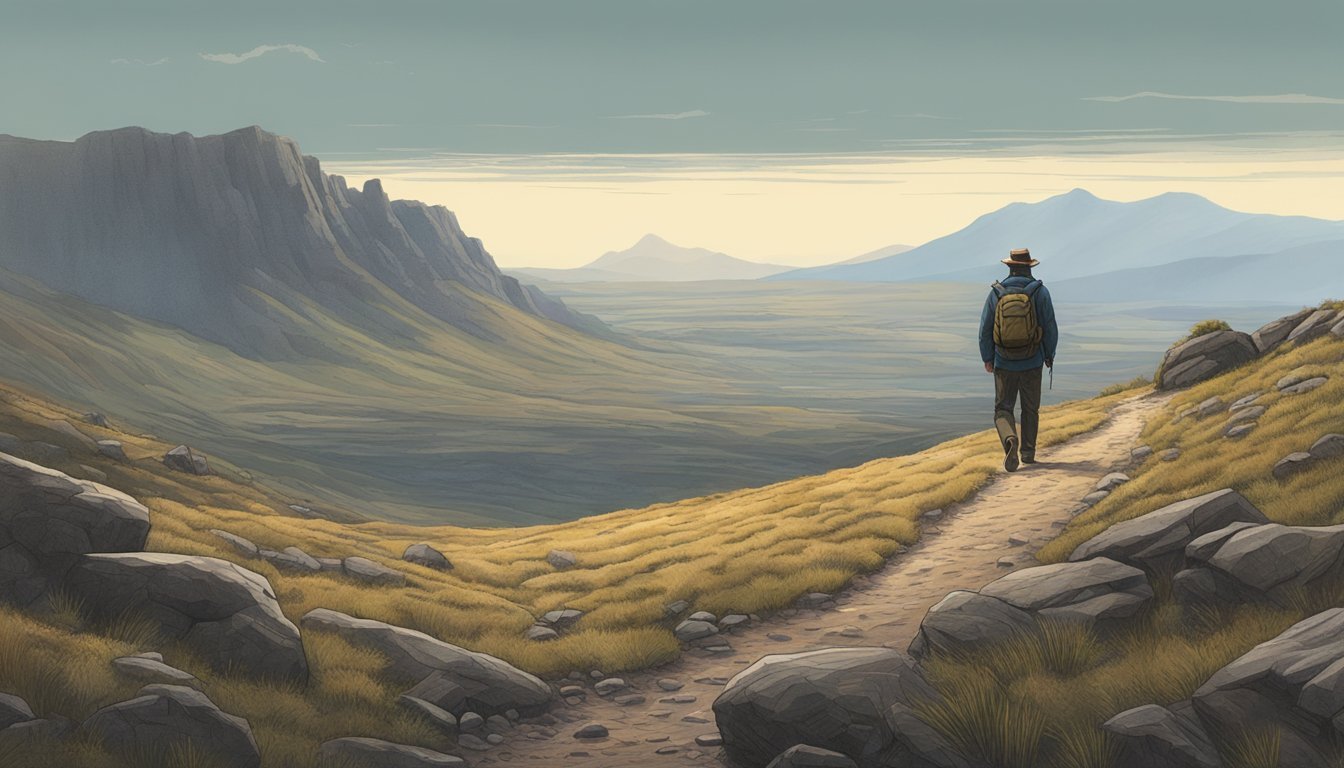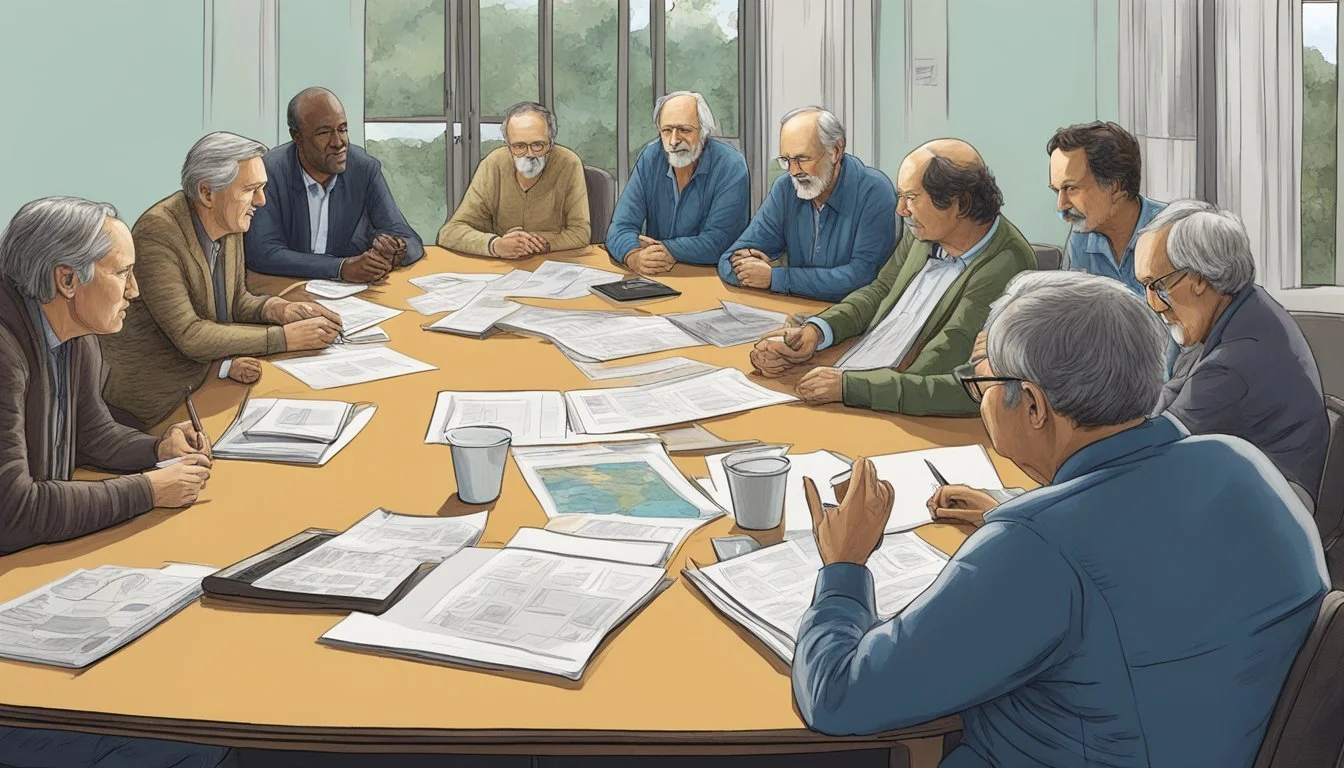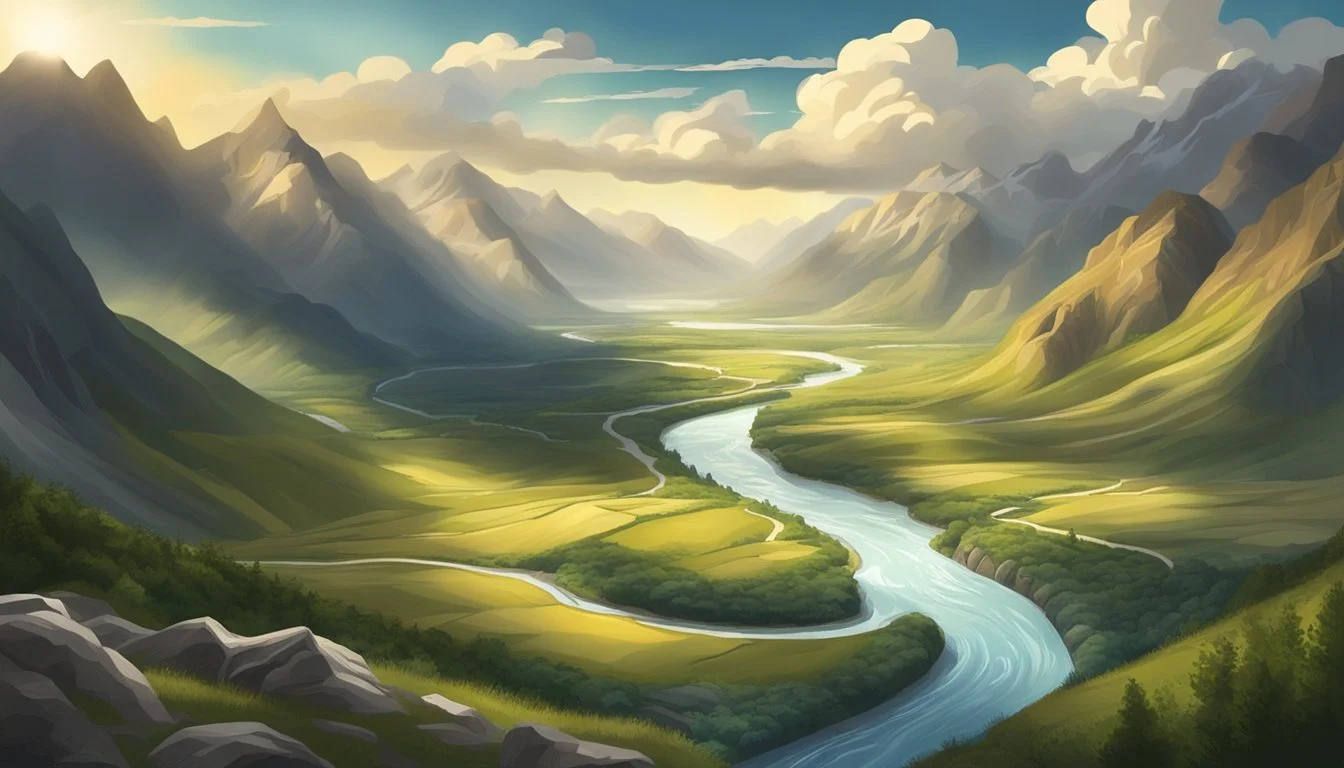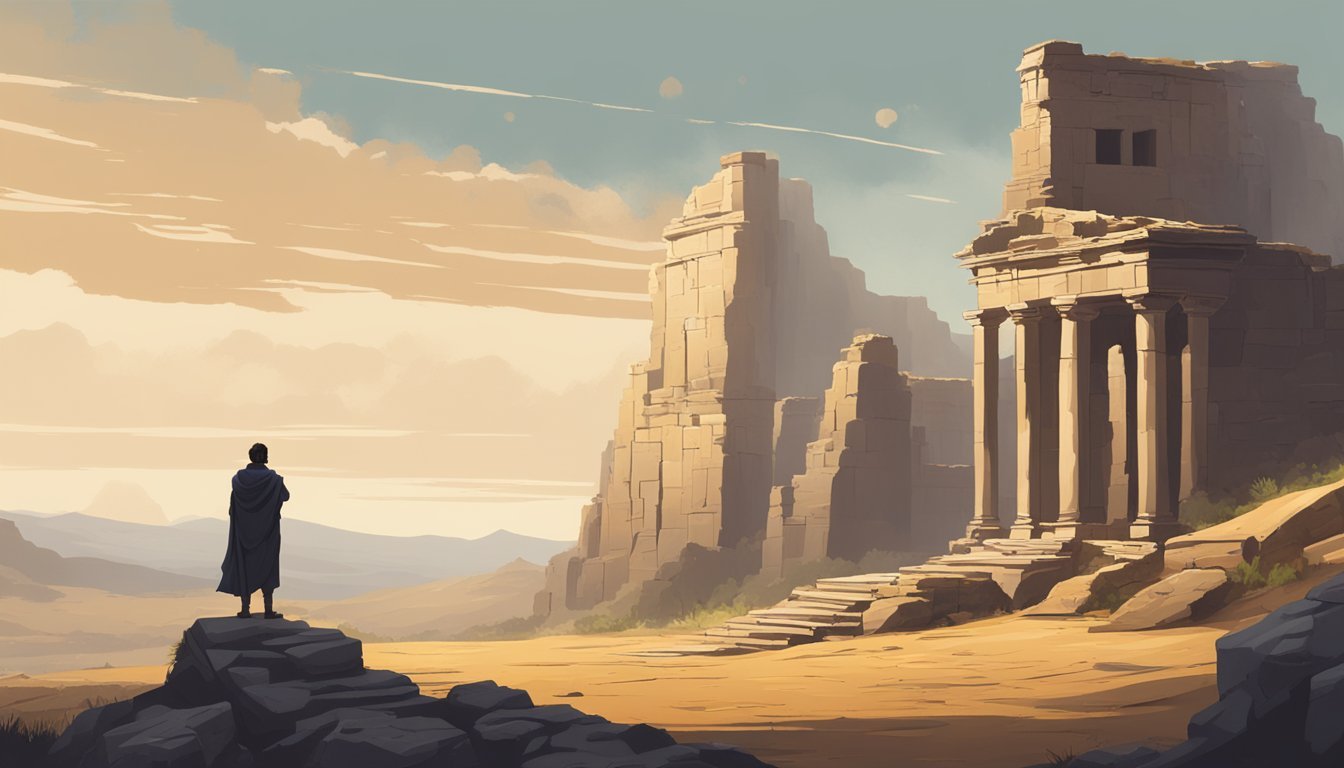Unlocking the Extraordinary: The Mind-Blowing World of Werner Herzog's Documentaries!
Werner Herzog stands as a towering figure in documentary filmmaking, renowned for his unique perspective and captivating storytelling. His documentaries often explore extraordinary individuals and remote landscapes, delving into the depths of human nature and our relationship with the world around us.
Herzog's documentaries are characterized by their poetic narration, philosophical musings, and unflinching examination of challenging subjects. From the haunting cave paintings of "Cave of Forgotten Dreams" to the tragic tale of Timothy Treadwell in "Grizzly Man," Herzog's films offer viewers a window into rarely seen worlds and complex human experiences.
With a career spanning decades, Herzog has produced a diverse body of work that continues to inspire and provoke audiences. His documentaries not only inform but also challenge viewers to contemplate deeper questions about existence, ambition, and the human condition.
Life and Career of Werner Herzog
Werner Herzog was born Werner Stipetić on September 5, 1942, in Munich, Germany. His mother, of Austrian-Croatian descent, moved him to a remote Bavarian village when he was just two weeks old due to Allied bombing.
Herzog's filmmaking career began in the 1960s, marking the start of the New German Cinema movement. He gained international recognition with his 1972 film "Aguirre, the Wrath of God."
Throughout his career, Herzog has directed both feature films and documentaries. His work often explores the extremes of human nature and the relationship between humans and their environment.
Notable documentaries in Herzog's filmography include "Grizzly Man" (2005) and "Cave of Forgotten Dreams" (2010). These films showcase his unique narrative style and philosophical approach to storytelling.
Herzog's contributions to German cinema are significant. He has received numerous awards and accolades for his work, including an Oscar nomination for his documentary "Encounters at the End of the World" (2007).
In addition to his film work, Herzog is also a published author and occasional actor. He has written books of prose and directed operas, demonstrating his versatility as an artist.
Herzog later relocated to Los Angeles, where he continued to focus on documentary filmmaking. His body of work spans over five decades, solidifying his position as a influential figure in world cinema.
Signature Themes in Herzog's Documentaries
Werner Herzog's documentaries explore profound themes that recur throughout his body of work. The acclaimed German filmmaker frequently examines human nature and our complex relationship with the natural world.
Herzog's films often portray individuals grappling with extreme circumstances or environments. He is drawn to eccentric characters and outsiders who challenge societal norms.
The natural world features prominently, often depicted as both awe-inspiring and indifferent to human concerns. Herzog's camera captures breathtaking landscapes while probing humanity's tenuous place within them.
A sense of melancholy and isolation permeates many of Herzog's documentaries. His narration employs poetic language to reflect on existential questions and the human condition.
Herzog frequently blurs the line between reality and fiction. He is known to stage scenes or manipulate timelines to reveal deeper truths about his subjects.
Key themes in Herzog's documentaries include:
• Man vs. nature • Obsession and madness • The search for meaning • Cultural clashes • Dreams and imagination
Through these recurring motifs, Herzog creates a distinct cinematic vision that is instantly recognizable. His unique approach has cemented his place as one of documentary film's most influential voices.
Collaborations and Key Figures
Werner Herzog's documentaries often feature compelling partnerships and subjects that illuminate the human condition. His collaborations with actors, explorers, and unconventional figures have produced some of his most memorable works.
Partnerships with Klaus Kinski
Herzog's turbulent relationship with actor Klaus Kinski resulted in five films, including the acclaimed "Aguirre, the Wrath of God" (1972). Their explosive dynamic fueled intense performances and dramatic on-set conflicts.
Herzog documented their complex partnership in "My Best Fiend" (1999), revealing both admiration and frustration. Despite frequent clashes, their collaborations pushed artistic boundaries and produced visually striking cinema.
Kinski's intense method acting and Herzog's uncompromising direction created memorable characters in challenging environments. Their partnership, though fraught with tension, yielded some of Herzog's most iconic works.
Depicting Dieter Dengler's Story
Herzog explored the remarkable tale of German-American pilot Dieter Dengler in two films. "Little Dieter Needs to Fly" (1997) documented Dengler's experiences as a Vietnam War POW.
The director later dramatized Dengler's story in "Rescue Dawn" (2006), starring Christian Bale. Both films showcased Herzog's fascination with survival and the human spirit in extreme circumstances.
Dengler's resilience and determination resonated with Herzog's recurring themes of man versus nature. The director's portrayal highlighted Dengler's ingenuity and will to live through harrowing ordeals.
Timothy Treadwell and 'Grizzly Man'
Herzog's "Grizzly Man" (2005) examined the life and death of Timothy Treadwell, who lived among wild grizzly bears in Alaska. The film used Treadwell's own footage alongside Herzog's reflections on human nature and the natural world.
Herzog's approach balanced empathy for Treadwell's passion with critical analysis of his actions. The documentary explored themes of obsession, the boundaries between humans and wild animals, and the consequences of idealism.
"Grizzly Man" showcased Herzog's ability to craft compelling narratives from existing footage, adding his unique philosophical perspective to Treadwell's story.
Exploring Bruce Chatwin's Themes
Herzog's "Nomad: In the Footsteps of Bruce Chatwin" (2019) paid tribute to his friend, the travel writer Bruce Chatwin. The film traced Chatwin's journeys and explored shared interests in nomadic life and ancient cultures.
Herzog incorporated Chatwin's writings and personal objects into the documentary, creating a portrait of the author's life and ideas. The film blended travelogue with memoir, reflecting on themes of wanderlust and human migration.
Their friendship, based on shared fascinations with remote places and cultures, influenced both men's work. Herzog's documentary served as both a personal reflection and an extension of Chatwin's explorations.
Major Documentary Works
Werner Herzog's acclaimed documentaries explore diverse subjects with a unique perspective. His films capture extreme environments, historical mysteries, and complex human experiences.
Encounters at the End of the World: Antarctica Explored
Herzog journeys to Antarctica's McMurdo Station in this 2007 documentary. He examines the lives of scientists and support staff working in Earth's most remote continent.
The film showcases Antarctica's otherworldly landscapes and underwater ecosystems. Herzog interviews eccentric characters, including a linguist studying seal vocalizations and a philosopher-turned-truck driver.
Encounters at the End of the World ponders humanity's relationship with nature. It questions our place in the universe and the potential for human survival in harsh environments.
Cave of Forgotten Dreams: Chauvet Cave's Mystique
This 2010 documentary explores France's Chauvet Cave, home to the oldest known human-painted images. Herzog gained rare access to film the 32,000-year-old Paleolithic art.
Using 3D cameras, the film captures intricate drawings of animals and abstract symbols. Herzog interviews archaeologists and scientists studying the cave's contents and significance.
Cave of Forgotten Dreams contemplates the origins of human creativity and spirituality. It connects viewers to our distant ancestors through their preserved artistic expressions.
Into the Abyss: Death Row Reflections
Herzog examines capital punishment in this 2011 documentary. He focuses on a triple homicide case in Texas, interviewing death row inmate Michael Perry and victims' families.
The film explores the impact of violent crime on all involved. Herzog speaks with law enforcement, prison staff, and community members affected by the murders.
Into the Abyss presents a nuanced view of the death penalty debate. It avoids easy answers, instead revealing the complex human emotions surrounding crime and punishment.
Lessons of Darkness: The Gulf War's Inferno
This 1992 documentary portrays the aftermath of the Gulf War in Kuwait. Herzog films burning oil fields, creating a haunting vision of environmental devastation.
The film uses minimal dialogue, relying on powerful imagery and music to convey its message. Herzog frames the destruction as an apocalyptic landscape, blurring the line between reality and science fiction.
Lessons of Darkness meditates on the consequences of war and human impact on the environment. It transforms real events into a poetic, unsettling exploration of conflict and nature.
Exploration of the Natural Environment
Werner Herzog's documentaries offer unique perspectives on remote landscapes and the people who inhabit them. His films capture the raw beauty and dangers of nature while examining human interactions with these environments.
Through the Lens: Volcanoes and Jungles
Herzog's fascination with volcanic landscapes is evident in "La Soufrière" (1977) and "Into the Inferno" (2016). These films showcase active volcanoes and the communities living in their shadows.
Herzog explores dense jungles in "Fitzcarraldo" (1982) and "Wings of Hope" (1998). These works highlight the challenges of navigating untamed wilderness.
His camera captures breathtaking footage of lava flows, steam vents, and tropical canopies. Herzog's narration adds depth, reflecting on humanity's place within these powerful natural forces.
Depicting Life in Siberia: Happy People
"Happy People: A Year in the Taiga" (2010) follows the lives of fur trappers in the Siberian wilderness. The film showcases their self-reliance and connection to nature.
Herzog portrays the harsh yet beautiful Taiga landscape through changing seasons. Viewers witness traditional hunting and fishing techniques passed down for generations.
The documentary emphasizes the trappers' isolation and their harmonious relationship with the environment. It presents a lifestyle largely untouched by modern conveniences.
Study of Grizzly Bears: Man Meets Wild
"Grizzly Man" (2005) examines Timothy Treadwell's life among Alaskan grizzly bears. The film uses Treadwell's own footage alongside Herzog's commentary.
Herzog explores the line between man and nature through Treadwell's experiences. The documentary showcases stunning shots of bears in their natural habitat.
The film raises questions about wildlife conservation and human intervention. It presents both the beauty and danger of close encounters with these powerful animals.
Herzog's narration provides a counterpoint to Treadwell's idealistic view of nature. The documentary serves as a cautionary tale about the risks of romanticizing wild animals.
Technology and Civilization
Werner Herzog's documentaries explore the profound impacts of technology on human society. His films examine how technological advancements shape our world and challenge our understanding of progress and connection.
Contemplating the Internet: Lo and Behold
"Lo and Behold: Reveries of the Connected World" delves into the transformative power of the Internet. Herzog interviews tech pioneers and visionaries to uncover the origins and implications of our interconnected world.
The film examines both the wonders and dangers of digital technology. It showcases groundbreaking innovations like self-driving cars and advanced robotics. At the same time, it raises concerns about cybersecurity threats and digital addiction.
Herzog's unique perspective brings a philosophical depth to discussions of artificial intelligence and the Internet of Things. He questions how these technologies reshape human relationships and societal structures.
Examining Human Ingenuity in 'Wings of Hope'
"Wings of Hope" showcases human resilience and technological ingenuity in challenging environments. The film recounts the story of Juliane Koepcke, who survived a plane crash in the Peruvian rainforest.
Herzog explores how aviation technology both enabled Koepcke's initial peril and facilitated her eventual rescue. The documentary highlights the role of bush pilots and small aircraft in connecting remote communities.
The film draws parallels to Herzog's earlier work "The Flying Doctors of East Africa," which depicted medical professionals using aircraft to reach isolated patients. Both documentaries showcase how technology extends human capabilities in extreme circumstances.
Herzog's Narrative Features
Werner Herzog's narrative films blur the lines between fact and fiction, creating powerful stories that explore human nature and historical events. His unique approach combines meticulous research with imaginative storytelling.
Fictionalized Truths: 'Rescue Dawn' and War
'Rescue Dawn' (2006) depicts the true story of U.S. fighter pilot Dieter Dengler's escape from a Laotian prison camp during the Vietnam War. Herzog crafts a gripping tale of survival, blending historical accuracy with dramatic flair. The film showcases Herzog's ability to extract deeper truths from real events.
Christian Bale's portrayal of Dengler captures the pilot's determination and resilience. Herzog's attention to detail in recreating the harsh jungle environment adds authenticity to the narrative.
The director's signature style shines through in moments of surreal beauty amidst the brutality of war. 'Rescue Dawn' exemplifies Herzog's skill in transforming factual events into compelling cinema.
Historical Explorations: 'Aguirre' and Conquest
'Aguirre, the Wrath of God' (1972) transports viewers to 16th-century South America, following a Spanish conquistador's descent into madness. This historical epic showcases Herzog's fascination with ambitious characters pushed to extremes.
Klaus Kinski's intense performance as the titular Aguirre embodies the film's themes of power, ambition, and folly. Herzog's decision to shoot on location in the Peruvian rainforest lends an air of authenticity to the historical setting.
The film's dreamlike quality and striking visuals create an atmosphere of impending doom. Herzog uses the historical backdrop to explore timeless questions about human nature and the corrupting influence of power.
Documentary Storytelling Techniques
Werner Herzog employs unique methods to craft compelling documentary narratives. He often blurs the line between fact and fiction, seeking what he calls "ecstatic truth" rather than literal truth.
Herzog's approach involves immersing himself in the subject matter. For "Fata Morgana," he spent months in the Sahara desert, capturing surreal imagery that transcended traditional documentary style.
Character development is crucial in Herzog's films. He seeks out eccentric individuals and encourages them to reveal their inner thoughts and motivations on camera.
The director uses poetic voiceovers to add depth and context to his visuals. His distinctive narration style has become a hallmark of his documentaries.
Herzog is known for staging certain scenes to enhance the narrative. In "Cobra Verde," he blended fictional elements with documentary footage to create a more powerful story.
Unconventional interview techniques are another Herzog trademark. He often asks unexpected questions to elicit genuine, emotional responses from his subjects.
Music plays a vital role in Herzog's storytelling. He carefully selects scores that complement and enhance the mood of his films, as seen in "Burden of Dreams."
Herzog's documentaries often explore extreme environments and situations. This approach adds drama and intensity to his narratives, captivating audiences with unique perspectives on the world.
Cultural Impact
Werner Herzog's documentaries have profoundly influenced the landscape of film and culture. His unique approach to storytelling has reshaped how audiences perceive reality through cinema.
Herzog's work often explores the human condition in extreme circumstances. This focus has sparked discussions about resilience, ambition, and the limits of human endurance.
The filmmaker's ability to blend fact and fiction has challenged traditional notions of documentary filmmaking. His methods have inspired a new generation of directors to experiment with form and narrative.
Herzog's documentaries frequently examine the intersection of nature and human culture. This recurring theme has contributed to environmental discourse and our understanding of humanity's place in the world.
His films have been embraced by both critics and audiences, earning prestigious awards and cultivating a dedicated following. This widespread recognition has cemented Herzog's status as a cultural icon.
The director's exploration of diverse subjects has broadened viewers' perspectives on global issues. From ancient cave paintings to volcanoes, Herzog's work encourages cultural exchange and understanding.
Herzog's influence extends beyond cinema into other artistic realms. His distinct voice and philosophical musings have inspired musicians, writers, and visual artists alike.
Human-Painted Images: [List]
Featured prominently in "Cave of Forgotten Dreams"
Explored the origins of human creativity
Sparked renewed interest in prehistoric art
German Cinema:
Herzog's work has significantly contributed to the international reputation of German filmmaking
His documentaries have helped define the New German Cinema movement
Legacy and Influence
Werner Herzog's documentaries have left an indelible mark on cinema. His unique approach to storytelling and exploration of human nature has inspired countless filmmakers.
Herzog's films blur the line between fiction and reality, challenging traditional documentary conventions. This style has become influential in contemporary documentary filmmaking.
The director's poetic narration and philosophical musings have earned him recognition as a poet of cinema. His distinctive voice and perspective resonate with audiences worldwide.
Herzog's work has influenced not only filmmakers but also writers, artists, and thinkers. His exploration of obsession, nature, and the human condition sparks discussions across disciplines.
Notable directors like Errol Morris and Joshua Oppenheimer cite Herzog as a major influence. His fearless approach to subject matter and unconventional methods continue to inspire new generations of documentarians.
Herzog's legacy extends beyond film. His insights into human nature and the world around us have made him a sought-after lecturer and cultural commentator.
The director's impact on documentary filmmaking is evident in the increased acceptance of subjective perspectives and creative narrative techniques in non-fiction storytelling.







